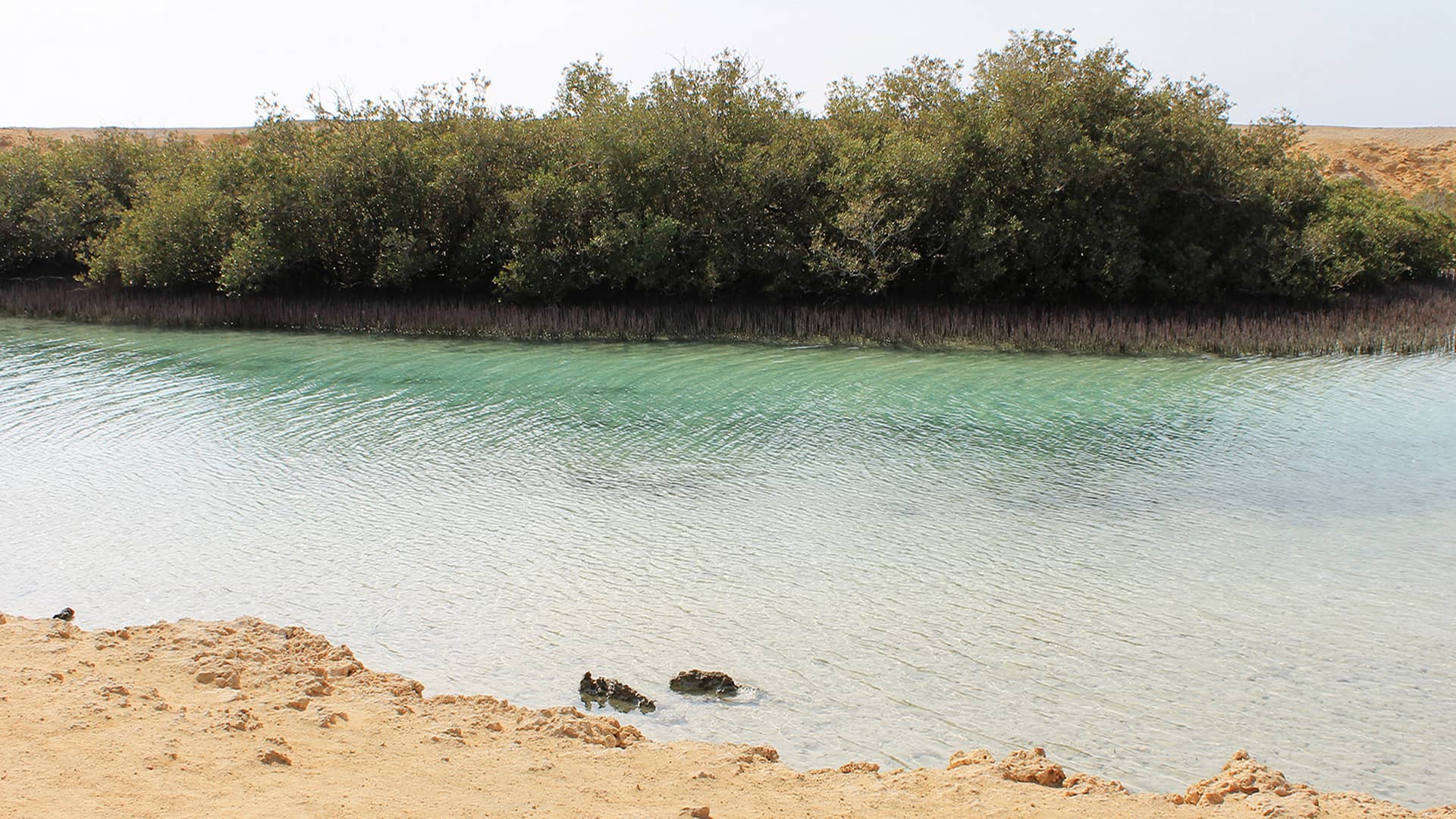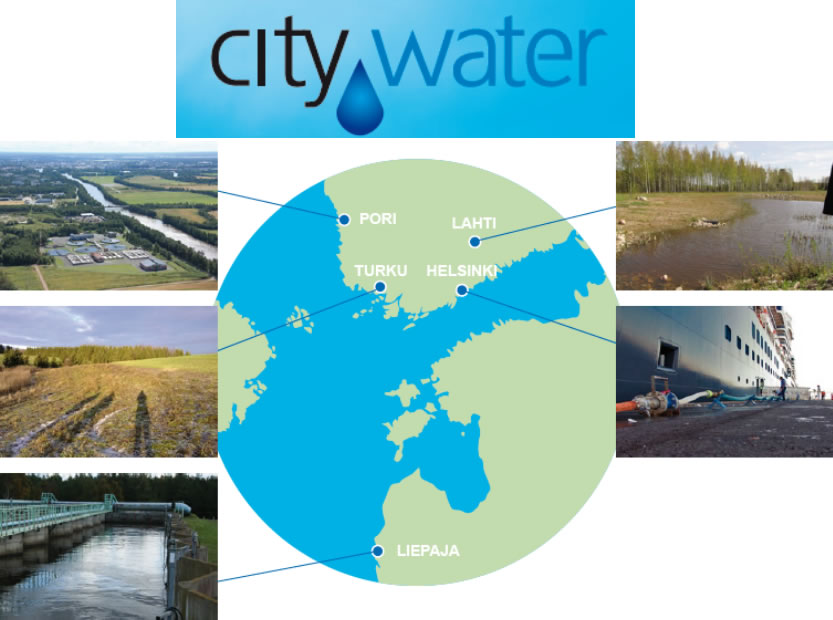Case study: CITYWATER – Benchmarking water protection in cities
project information
CITYWATER – Benchmarking water protection in cities was a three year project (2012-2015) that worked for improving the state of coastal waters in the Baltic Sea. It focused on concrete water protection measures at the local level, with an emphasis on the role of cities and municipalities.description
The overall objective of the CITYWATER – Benchmarking water protection in cities project was to implement and facilitate environmentally relevant and cost-beneficiary voluntary water protection measures in cities and municipalities in the Baltic Sea Region in order to improve the state of coastal waters. The project further aimed at changing working procedures by increasing environmental communication and knowledge in cities and municipalities in the Baltic Sea Region in order to ensure continuous work for water quality improvement in local waters. The project was based on the Baltic Sea Challenge initiative which was used as a demonstration basis for implementation of the project. The project consisted of three entities of actions. The first entity, B. Implementation actions, contained action B.1) demonstrating and spreading the Baltic Sea Challenge initiative as well as strengthening the Baltic Sea Challenge network, B.2) measures to improve the environmental communication and ways to find more efficient tools to communicate the valuable voluntary water protection work that was being done by the project beneficiaries and B.3) implementation of storm water solutions, where the aim was to construct nature-based storm water handling solutions, in Finland and Estonia. The second entity of actions, C. Monitoring the impact of the project actions, contained action C.1) assessment of the environmental impact and the benefit-cost ratio of different water protection measures on local level, and action C.2) a toolbox, where all the experience, knowledge and the lessons learned from the project actions and the Baltic Sea Challenge in general was complied. The third entity consists of D. Communication and dissemination actions, disseminating the project activities and results and promoting the project as well and E. Project management and monitoring, aimed at facilitating the achievements of general project activities and aims. Some specifics of the project’s entities include:- Demonstration of the Baltic Sea Challenge network: CITYWATER worked in close cooperation with the Baltic Sea Challenge network. The objective was to promote and facilitate water protection work and to demonstrate the Baltic Sea Challenge by spreading good examples in the Baltic Sea region.
- Environmental communication in the Baltic States: two surveys were conducted among both citizens and municipalities in Estonia, Latvia and Lithuania in order to explore the dominant attitudes and knowledge about water protection, especially on the local level.
- Storm water constructions in Helsinki, Tallinn and Turku: sustainable storm water solutions in each partner city Helsinki (biofiltration), Tallinn (reconstruction of a water course) and Turku (planning of a residential storm water wetland) were planned and implemented.
- Cost-benefit analysis of reducing eutrophication: focuses on assessing the role of local actors (cities and municipalities) working in saving the Baltic Sea and consists of five case studies representing differing water protection measures implemented by the municipalities within the Baltic Sea catchment area: centralising of municipal wastewater treatment to Luotsinmäki WWTP in Pori, an investment in new aerators in Liepaja WWTP, reception of sewage waters from ships in the Port of Helsinki, a constructed stormwater wetland in Lahti and agricultural buffer zones in the city of Turku. The analysis was able to reveal all the costs and benefits associated with the measure for its entire lifespan, thus supporting lo¬cal actors in decision-making considering favourable measures.
- Toolbox of water protection measures in cities: The Tools for water protection web page (a web-based toolbox designed for professionals and experts who do concrete work, strategic planning or make decisions on water protection in cities, municipalities, companies, NGOs or other organisations, www.waterprotectiontools.net web page) compiles all results in order to support the implementation of water protection activities at the local level in municipalities, associations, companies and other organisations. In addition, it can be found background information and tools and examples and practical tips on water protection measures implemented, as well as “The Bank of actions”, a map full of inspiring and useful examples of practical water protection actions.
- Dissemination of project results: includes both communicating progress of specific project actions and spreading general project information.
B.1: To increase commitment for saving the sea: Promote and facilitate voluntary water protection work through demonstrating the Baltic Sea Challenge (BSC) by spreading good examples in the Baltic Sea Region.
B.2: To raise awareness: Improve the knowledge of beneficiaries and stakeholders on how to communicate their message within their own organization and to the general public and on how to motivate people to act in order to protect the Baltic Sea.
B.3: To show example: Implement concrete water protection measures on local level.
C.1: To provide arguments: Assess the environmental impact and benefit-cost ratio of different water protection measures and of different activities that cities and municipalities carry out in perspective of the Baltic Sea.
C.2: To compile the results: Partly to monitor the impact of project actions, partly to compile the result from the project to be disseminated in the end of the project and to be used in the continuation and valorisation of the project.
Policy context
The project was realized under the umbrella of the Baltic Sea Challenge network, a joint initiative of the Cities of Helsinki and Turku, Finland to save local waters and the Baltic Sea. Specifically it addressed:- EU Baltic Sea Region Strategy,
- Water Framework Directive,
- Marine Strategy Framework Directive,
- Baltic Sea Action Plan by HELCOM
environmental impacts
Achieving a good ecological status of the Baltic Sea, as well as better quality of local wa¬ters by implementing and facili¬tating local water protection measures, especially within municipalities. CITYWATER by the provision of local measures attempted to reduce eutrophication which has an impact on the ecosystem functioning negatively by decreasing habitat provision, diversity and even resilience of the sea. This means decreased food supply and recreational opportunities among others. Besides the ecological effect of the sustainable solutions, a very important aspect of this work was to show case the implementation proc¬ess and increase knowledge on the subject both within the own organisation and the city. Also a brochure describing the solutions was compiled.socioeconomic impacts
It is important to protect the Baltic Sea, because it provides many kinds of socio-economic benefits. In the Baltic Sea catchment area there are living over 84 million people from 14 states, all using the common sea and benefiting from it more or less. In many Baltic Sea countries about 80–90% of people are used to spending their leisure time on the Baltic Sea by swimming or walking or picnicking. Decreasing eutrophication in the Baltic Sea provides notable socio-economic benefits, as there are in total 24 different ecosystem services that the Baltic Sea provides (SEPA 2008). These ecosystem services consist of well-known services like food and recreational opportunities that provide direct benefits for people, but also supportive and regulative services that are essential in sustaining the balance of the marine ecosystem. In addition, the project also strove to change working procedures by increasing environmental communication and knowledge in municipalities in the Baltic Sea Region.key lessons
The aims of reaching out to new actors in the Baltic States have been realized by arranging two large networking events for BSC partners, in Helsinki 2014 and in Tallinn 2015, and by participating in events arranged by others. The networking events were excellent platforms for cooperation, exchange if ideas and finding new partners for cooperation. The result of the surveys conducted within the Environmental communication in the Baltic States indicate that for the protection of the Baltic Sea, the role of communication subverted the prevailing beliefs that individual action have little impact or that initiatives mostly abate in the conflict with economic interests or bureaucratic indifference. Although citizens and municipalities share the same values and care for the Baltic Sea, the two groups, however, diverge in the sense of responsibility and preference of measures. The established good cooperation between the cities gives an additional advantage of learning together and sharing experiences of storm water handling in urban areas. Constructing these storm water solutions has given information about good practices and tips on how to manage storm waters even better in the future. Thus, networking brings many benefits to its members such as the expertise of the other network members, support for planning measures and a strong communication channel. In addition, networking enables interaction among peers – Mayor to Mayor, teacher to teacher, sewage plant operator to another operator. The CITYWATER project resulted in practical knowledge on the form and need of communication related to water protection, the benefits of applying a cost-benefit analysis at the municipal level, guidance on the implementation of a storm water solution, and the supportive function of a network. The results of the cost-benefit analysis showed that local actors play a crucial role in protecting the Baltic Sea. In practice, nutrient reductions are brought about at a local level by local actors and as such, municipalities need to take control of managing waste waters, land-use, plan¬ning, ports etc. in a responsible way, as well as to tell citizens about their actions, as well as increase awareness regarding what ordinary people can do themselves.Project website
http://www.citywater.fiKnowledge types
Types of knowledge produced from this case study.
Geographical coverage
Beneficiaries
Beneficiaries of this case study.
-
National Public Authority of Finland
-
Regional or Local Public Authority of Finland
-
Non-Govermental Organisation & Civil Society Organisation Finland
-
Communicators & Media Estonia
-
Non-Govermental Organisation & Civil Society Organisation Estonia
-
Regional or Local Public Authority of Estonia
-
National Public Authority of Estonia
-
General Public Estonia
-
General Public Finland
-
Communicators & Media Finland
Related Policies
Which EU policy requirements and EU Directives were aimed at being addressed by the project or which national and/or regional policy challenges and/or requirements aimed to be addressed?
Funding mechanism
Availability/accessibility of knowledge outputs online















